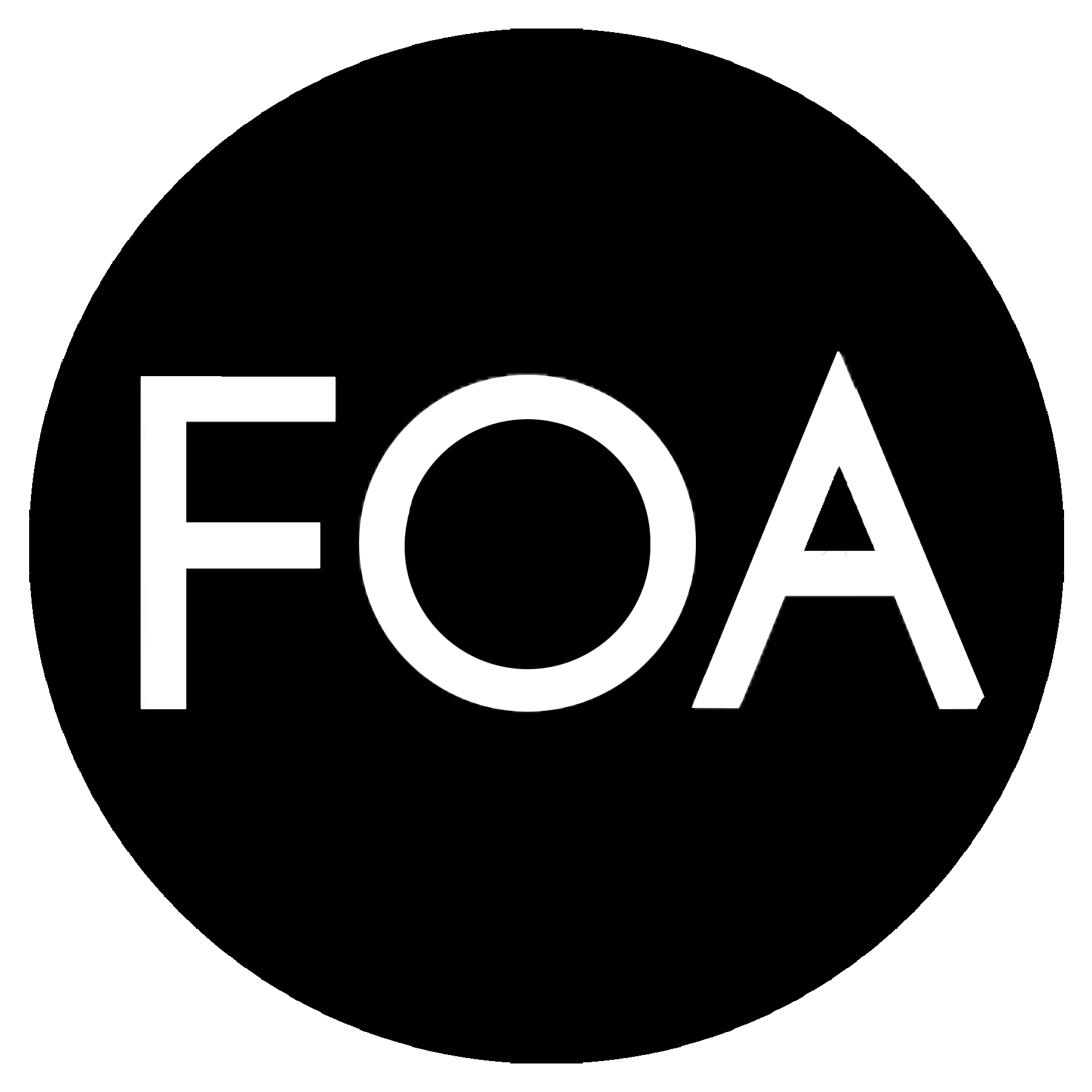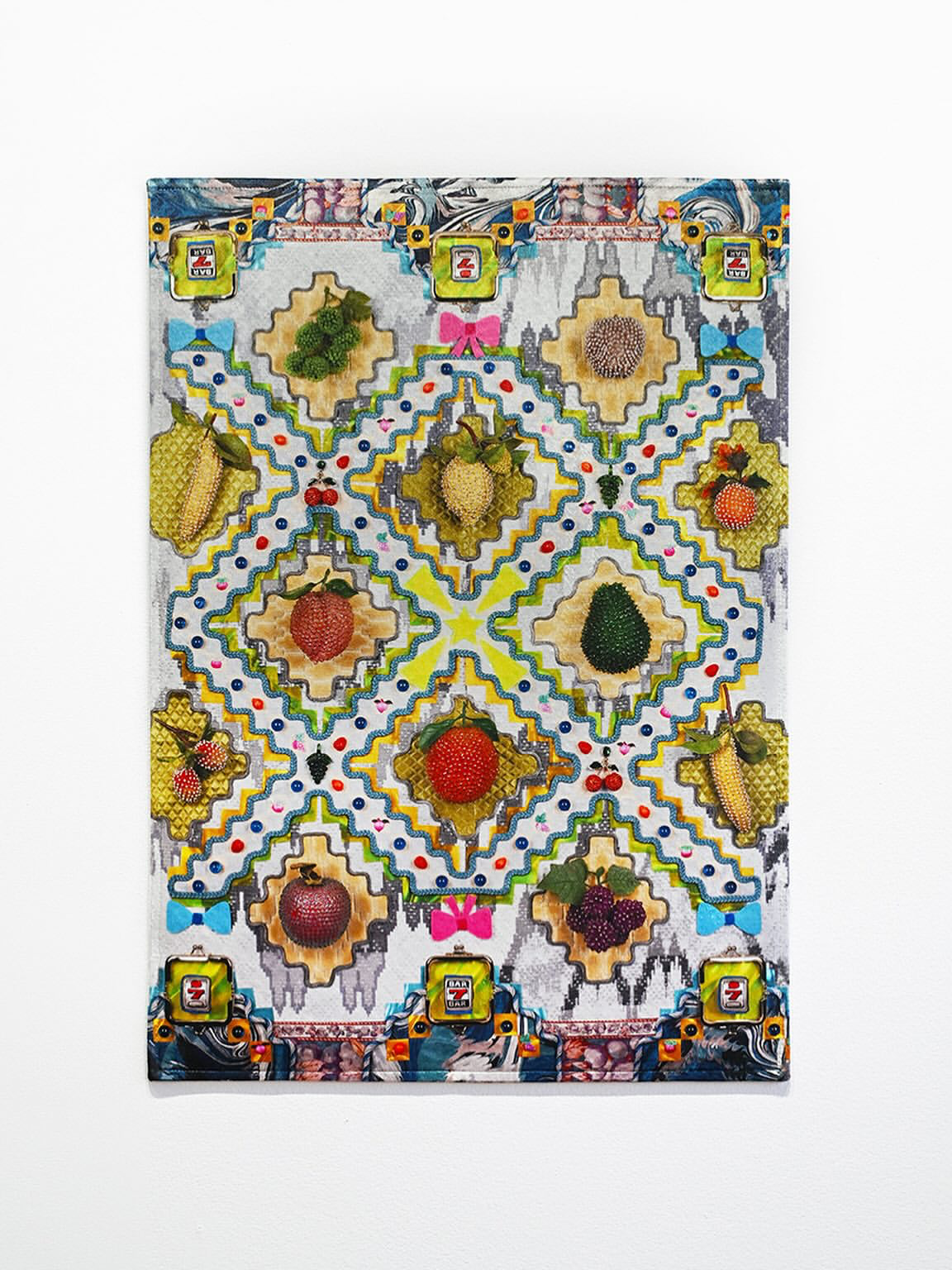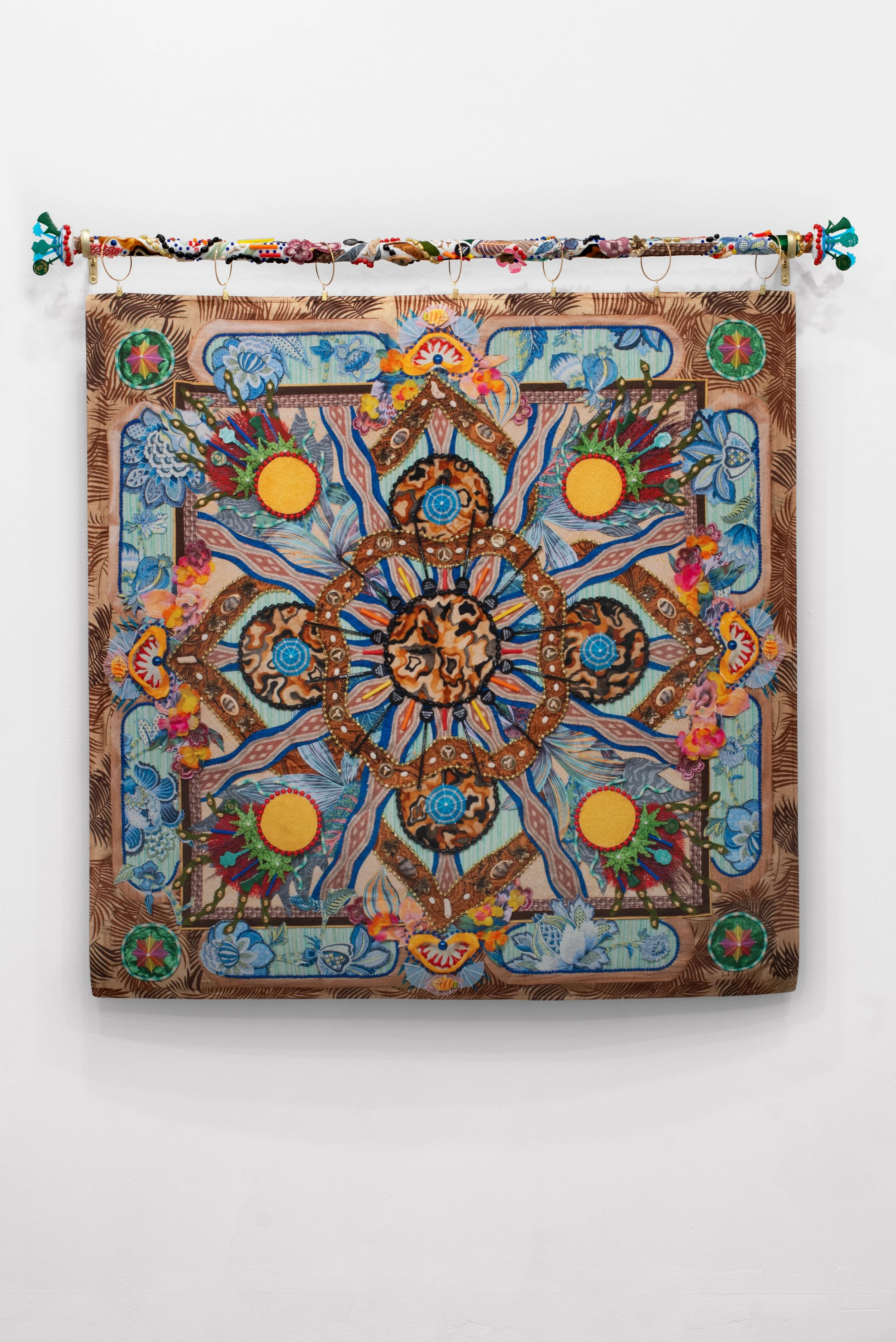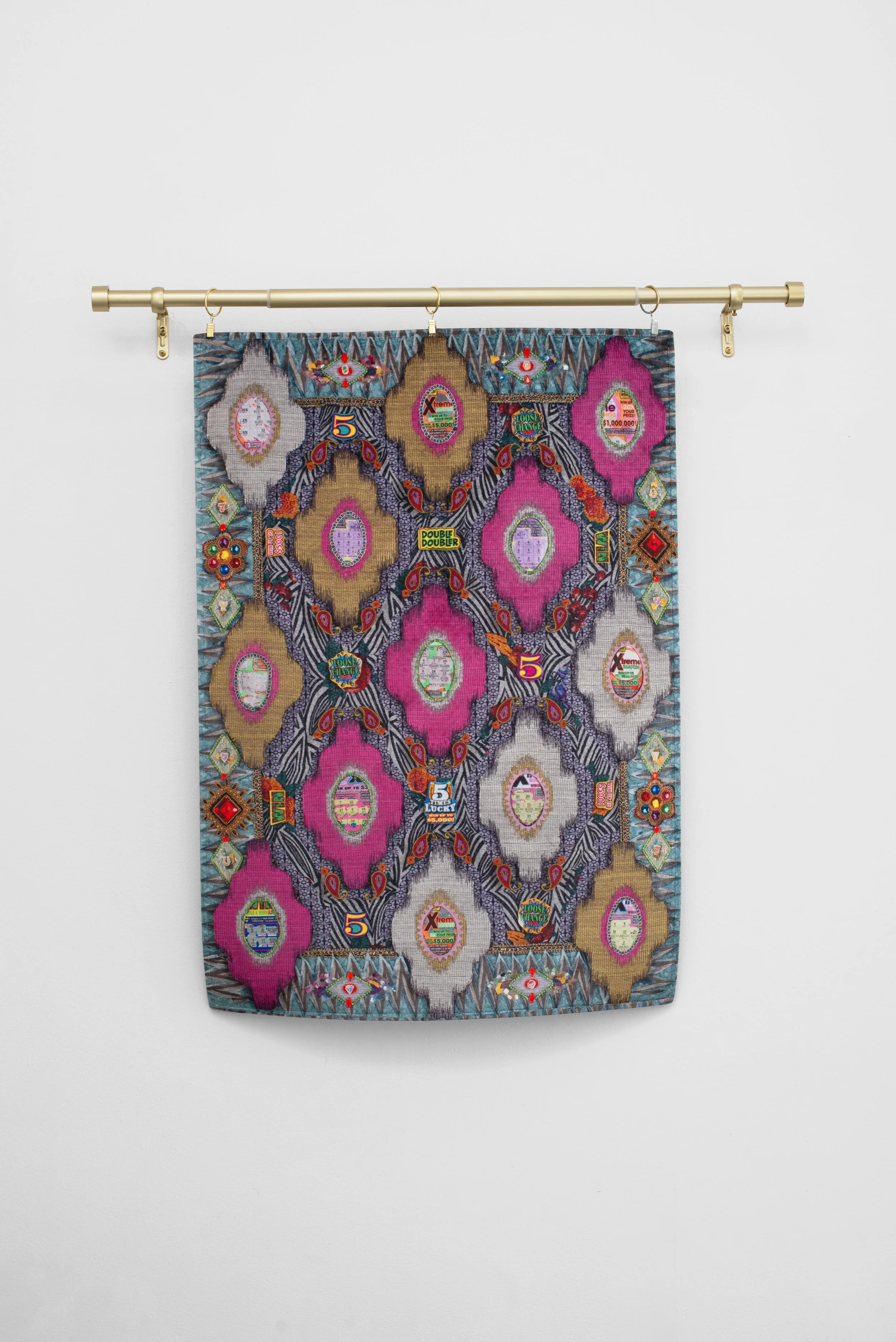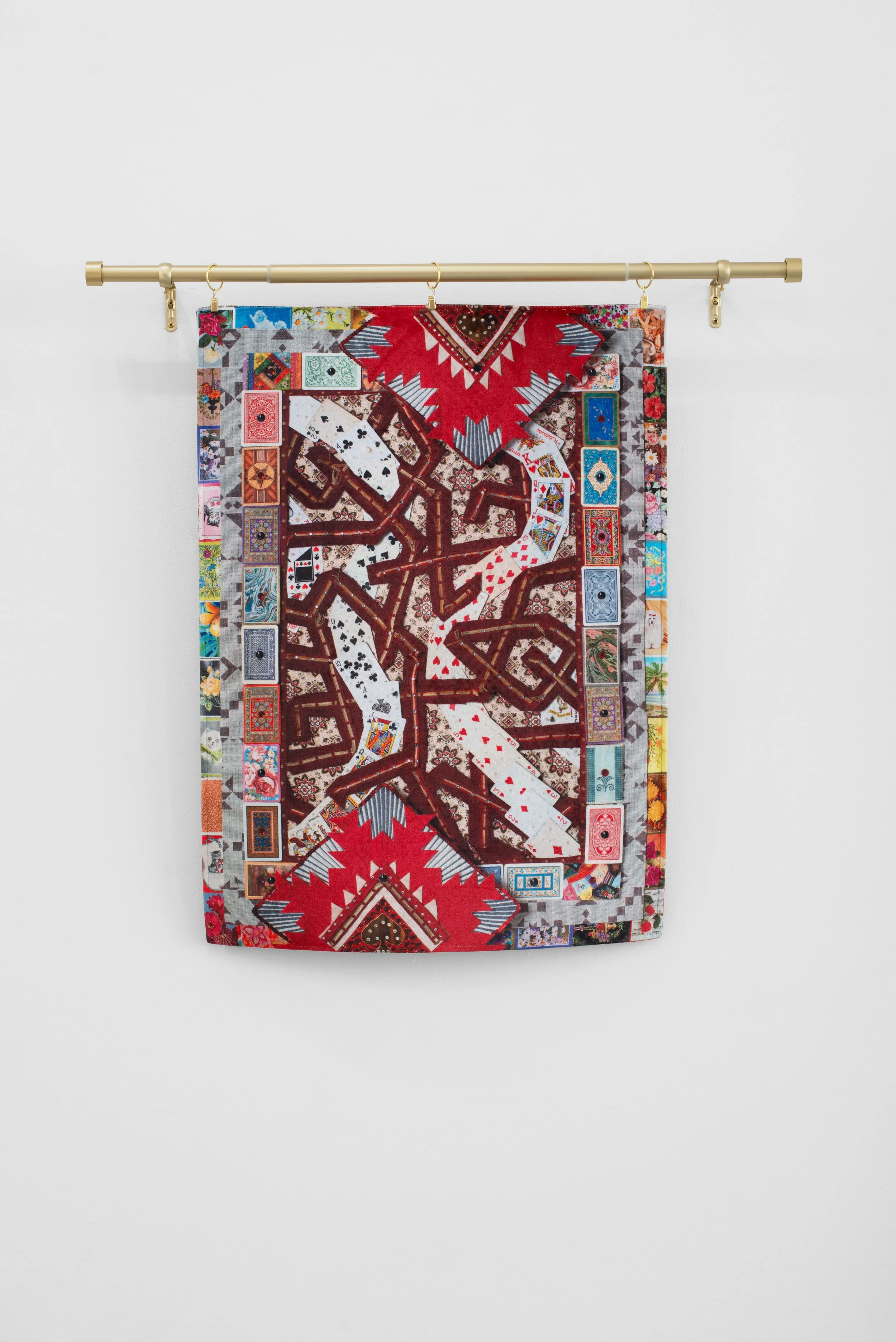Interview with Kat Ryals
Kat Ryals is a Brooklyn-based mixed media artist. Her work explores the dichotomies between natural and artificial, trash and treasure, sacred and profane, luxury and kitsch. Through sculpture, lens-based work, textile art, and site-specific installations, she emulates material culture and organic artifacts. Often replicating objects that symbolize high status—such as rugs, chandeliers, garments, and houseplants—Ryals subverts embedded notions of value and waste by incorporating cheap, found, and recycled materials.
Working across photography, printmaking, craft-based assemblage, and molding & casting, she directly engages with perceptions of authenticity, taste, and hierarchy. Her practice examines how cultural currencies shape personal desire, reinforcing systems of social and environmental disparity.
Raised in suburban Arkansas and the rural Cajun Acadiana region of Louisiana, Ryals’ artistic practice was shaped by time spent rummaging through thrift stores, daydreaming in ornate Catholic churches, and wandering forests, swamps, and gardens on her family’s farm. These experiences continue to inform her fascination with the aesthetics of excess, preservation, and decay.
INTERVIEW WITH KAT RYALS
Can you tell us a little bit about yourself and how you came to be an artist?
Currently based in Brooklyn, NY, I was born in Jonesboro, Arkansas and raised in Little Rock. I also spent a lot of time in the rural Cajun Acadiana region of Louisiana, where my grandparents had a farm.
I grew up being one of those “art” kids. I loved drawing and painting, I was an obsessive doodler, I won art contests at school, I took art classes growing up, etc. When I got to high school I was unsurprisingly most interested in art class, and I knew that I wanted to go into creative arts. After a SCAD alum visited our class in high school, I decided to apply there for college. I went to a small Catholic high school (we only had maybe 4-5 other students in my art class) so I was pretty naive to the larger art world at the time. Getting to SCAD was eye opening and incredibly validating in a way that I hadn’t experienced growing up. For a while, I aimed to become a fashion photographer (in high school I used to spend a lot of time thumbing through fashion magazines because we didn’t have things like Instagram at the time!) but towards the end of college I shifted back towards fine art and wanted to take a chance on pursuing an independent practice as an artist. My dad also loved art growing up and was an art major when he first got to college in Louisiana but ultimately switched majors and went in a different direction. So, it definitely runs in the family, and I was lucky to have that encouragement to push me forward!
Your work in Showroom Dynasty was created from a unique multi-layered process beginning with the collaging of found objects. Can you share the process and any meaning behind it?
My rug series blends the aesthetics of modern banquet carpets with 18th c. European Savonnerie rugs - textiles favored by French aristocracy. They have the appearance of handwoven, royal opulence yet were produced through a physical, hand-built collage process, then photographed and printed onto velvet rugs by an accessible, consumer level dye-sublimation printing company.
The designs are enchanting, yet the elements that constitute them are discarded, cheap, artificial, or dead. A questioning of perceived value is played with here, by luring the viewer in with luxury aesthetics before revealing the work’s kitsch qualities. Their imagery references places of desire where busy carpets exist – conference centers for trade shows, elaborate palaces from a bygone era, perhaps the casino floor –spaces designed to keep consumers hopelessly spending under the illusion of attaining or becoming something more.
I began the Rugs series in 2021, after visiting Versailles in 2018 and seeing Savonnerie rugs firsthand. When working on this series, my starting point has been researching the online Met Museum and Versailles collections to draft compositions influenced by actual historical rugs. The collage materials I select, in both subject and palette, are informed by iconography I considers ubiquitous of Las Vegas, a site of contemporary excess and indulgence for the everyman: locales like spas, pools, steakhouses, buffets, hotel lobbies, wedding chapels, and casino game floors. To build the collage I staple, pin and glue-gun materials in layers directly onto the studio wall or board, pushing and pulling the foreground and background until a final composition is achieved. I photograph the final collage with a high-resolution digital camera, and that photo file is then fabricated to-scale as a physical print on velvet.
While the rugs reference unattainable, handwoven opulence, they are produced through a craft-based collage process – a common aesthetic of vernacular folk art. With the original collage being an ephemeral part of the production process, the final works are offered to collectors as an accessible print edition. The series intentionally diminishes the aura of the singular object, creates a tension of desire between the viewer and object through the flattening of texture-rich, 3-D objects (a process we may experience through screens on our phones), and allows the final pieces to have a utilitarian purpose as an actual rug, if so desired.
Your work spans an array of mediums and sizes. How do the various facets of your practice inform one another? Do you often work across multiple mediums simultaneously?
I primarily work in assemblage and photography, with other materials and processes blended in like sewing and embroidery, molding and casting, and building installations. My work is primarily focused on investigating how value is assigned and the insatiable seeking that is generated by desire, both on a personal level and larger visual consumer culture.
I’m interested in starting broader conversations through the collecting and curating of found objects (items that come loaded with history and perceived meanings) married with recycling as both a physical act of conscious sustainability and also a conceptual form of imitation. There’s a bit of world building that lingers from my early interdisciplinary practice, through creating sculptures that act like artifacts from an uncanny world. However, my projects are less part of a singular vision now through various projects creating a whole narrative and tend be rooted in exploring an individual object or narrative around that object.
All of my work explores opposing value assignments like trash/treasure, natural/artificial, luxury/kitsch, sacred/profane, etc. and cultural currencies like authenticity, taste, design, and hierarchy.
Real objects are often a starting point for me, and I ripple out from there by mimicking an object, often creating a new singular form out of many items, and translating that object through different mediums or states of perception. Using photography and molding/casting allows for that translation and for seriality.
I often use multiple mediums and processes for a single project, and I tend to be project based which means I’ll work on a single body of work at a time.
However, I do like to jump from mediums and challenge myself to learn new processes. Usually something I discover through one project becomes the catalyst for the next one.
For “Showroom Dynasty”, I created custom memory ware curtain rods based in the folk tradition for the larger rugs to hang from, so evidence of the real objects is shown alongside the print. As I am now wrapping up this rug series, I am aiming to start a new body of work focused on exploring memory ware vessels and tiles, so these rods act as a sort of lead into the next project.
The studio can be a sanctuary and inspiration. Can you share more about your studio space, and any rituals, music, or other elements that you incorporate when beginning a new body of work?
Though I have a home studio (a blessing and curse!), I don’t have a routine or regular studio practice because I also run my arts org PARADICE PALASE and curate. So, my studio work is usually more “seasonal” because I divide up my time to focus on different aspects of my creative work. But I deal with this by doing the work in my head when I’m not in production mode - finding inspiration mostly outside of the studio through non-fiction books & essays, experiences like when I visited Versailles, films, and conversations with other artists, coming up with ideas for new projects and thinking about them for a long period of time before I actually start them so they are ready to go when I get to that studio time again.
When I go into studio mode, it’s usually a period of intense production because of timelines and schedules. I sort of approach making new work in a project management kind of way, which sounds unromantic but really helps to keep me organized and focused.
Sometimes diving in feels incredible but other times it can feel intense and uncomfortable. I always listen to music, usually DJ sets to keep up the energy or I’ll listen to podcasts (comedy more so lately) or even put on some loud trash tv show, a documentary, or a series I’ve wanted to revisit but don’t have time to re-watch on my laptop for background noise. And with the latter, often what I choose ends up having some sort of influence on whatever it is I’m working on, too.
What advice would you share with emerging artists?
Stay organized with the admin side of your studio practice (prioritize setting aside time to get yourself organized - it’s super helpful when you get busy or balance multiple work lives!), annually set goals for yourself and strategize a road map of reasonable steps you can follow to achieve them (also helpful to do with another person!), find a mutually supportive artist community to be part of, and it’s okay to take breaks from your art practice or give yourself periods of rest when you need it.
WORK HIGHLIGHTS
